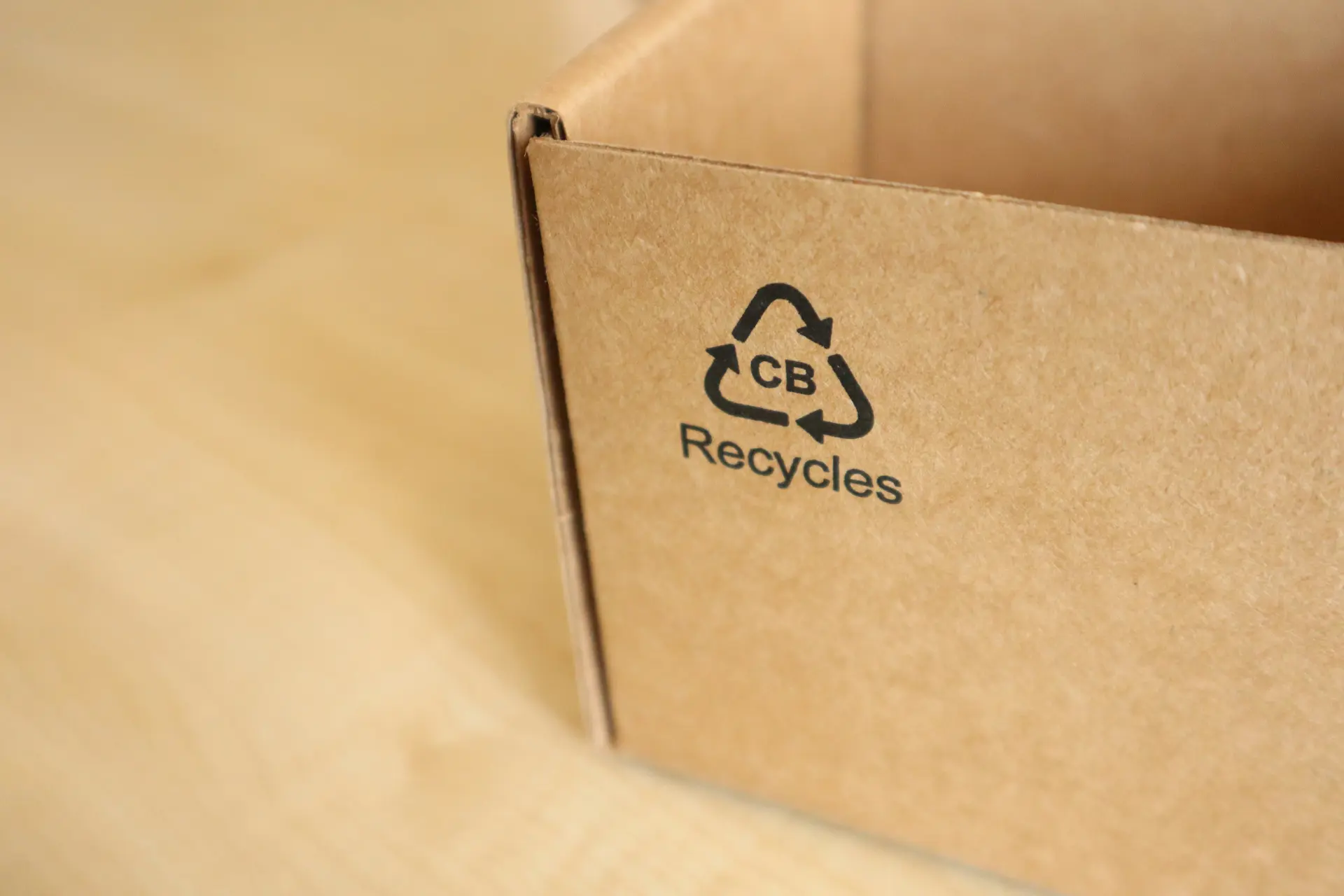Introduction to EPR Compliance
Extended Producer Responsibility (EPR) is transforming the way organisations design, package, and distribute their products. What was once seen as an environmental initiative has become a global regulatory requirement that directly impacts supply chains, costs, and brand reputation.
At its core, EPR compliance ensures that producers take full responsibility for the environmental impact of their packaging and products. This includes financing or organising the collection, recycling, and recovery of materials once products reach the end of their life.
As governments tighten regulations and consumers demand greater transparency, achieving EPR compliance has become both a legal necessity and a business advantage. For brands operating across multiple markets, it can appear complex, but with the right structure and digital tools, it is entirely manageable.
This article explores the eight key essentials of EPR compliance, offering practical advice and showing how 4Pack’s platform helps businesses stay ahead of changing regulations with confidence and accuracy.
The Principles Behind Extended Producer Responsibility
EPR is built on a simple principle: those who place products and packaging on the market should be responsible for what happens to them at the end of their life. This responsibility extends beyond selling the product. It includes collecting, sorting, recycling, and properly disposing of materials.
The aim is to encourage producers to design packaging that is recyclable, reusable, or made from sustainable materials. When companies bear the cost of waste management, they are more motivated to make environmentally conscious design and production decisions.
EPR also supports circular economy goals by reducing waste, promoting material recovery, and helping nations move closer to net zero targets.
Global Expansion of EPR Regulations
EPR has grown from a European initiative into a global movement. The UK, France, Germany, Canada, and several Asian countries are now enforcing producer responsibility laws. These regulations often differ in detail, but they share one goal: to make producers financially accountable for the environmental impact of their packaging.
In the UK, EPR will eventually replace the current Packaging Waste Regulations and introduce full net-cost recovery for packaging waste collection and recycling. Across Europe, the upcoming Packaging and Packaging Waste Regulation (PPWR) will harmonise reporting and labelling requirements.
This rapid global expansion means businesses must keep pace with evolving rules in every market where their products are sold.
What Non-Compliance Really Means for Businesses
Failing to comply with EPR requirements can have serious consequences. Companies may face substantial financial penalties, damaged brand reputation, and even restrictions on selling products in specific markets.
Non-compliance also leads to missed opportunities. Retailers and partners increasingly prefer suppliers that demonstrate transparency and sustainability. Accurate, compliant packaging data builds credibility and trust, while also reducing risk during audits or customer reviews.
The 8 Essentials of EPR Compliance
1. Accurate Packaging Data Management
Accurate data is the foundation of EPR compliance. Every single component of your packaging must be correctly recorded and categorised, from outer cartons to caps and labels.
Many businesses still rely on spreadsheets or fragmented systems to store this data, which often leads to duplication, errors, and confusion. Small mistakes, such as incorrect material weights or missing product references, can lead to inaccurate EPR submissions and potential fines.
The solution is a centralised and structured approach. By storing all product and packaging information in one verified system, such as 4Pack, you can ensure consistency, traceability, and confidence in your reporting.
Centralised data management not only helps with compliance but also supports sustainability, allowing teams to quickly identify where packaging improvements can be made.
2. Clear Product Categorisation and Material Tracking
Different materials carry different environmental responsibilities and costs. To comply with EPR, businesses must understand exactly what materials make up their packaging and in what proportions.
For example, a beverage bottle might be made from PET plastic, an aluminium cap, and a paper label. Each component must be categorised correctly and reported according to the relevant material type.
Incorrect classification can result in reporting inaccuracies and higher EPR fees. Some materials are subject to specific obligations, such as deposit-return schemes or modulated fees based on recyclability.
To avoid these issues, companies should implement structured data input fields and validation rules that prevent incorrect material entries. Digital solutions like 4Pack can automatically flag missing or inconsistent information before it becomes a compliance risk.
3. Country-Specific Knowledge and Local Regulations
EPR is not a one-size-fits-all policy. Each country has its own set of rules, definitions, and reporting structures. What counts as recyclable in one region might not be considered recyclable in another.
In the UK, for instance, producers must report packaging placed on the market and pay fees that reflect the true cost of managing waste. In France, the system also considers eco-modulation, where fees are adjusted based on the environmental performance of packaging.
For multinational businesses, understanding these differences is vital. Reporting deadlines, data requirements, and approved compliance schemes vary widely. Without local insight or structured data mapping, it is easy to fall behind or over-report.
A reliable compliance solution must therefore allow for country-specific configuration, ensuring that data is reported accurately according to local expectations.
4. Efficient Data Collection from Suppliers
EPR compliance relies on accurate upstream information, and that means collaborating effectively with suppliers. Each supplier must provide details about the materials, formats, and recyclability of the packaging they produce.
When this process is manual, errors are common and data collection becomes slow. Spreadsheets are shared, edited, and returned with inconsistent information, creating an administrative burden.
The most efficient approach is to automate supplier engagement. 4Pack’s workflows allow suppliers to input data directly into a shared system, ensuring it meets validation rules before submission. This creates a clear audit trail and saves teams countless hours of manual consolidation.
By building supplier collaboration into your compliance process, you can maintain real-time visibility over packaging data and respond quickly to changing requirements.
5. Robust Reporting and Audit Trails
Transparency is at the heart of EPR compliance. Regulators expect organisations to be able to demonstrate exactly how data was collected, verified, and reported.
A robust reporting system must include:
- Detailed records of all packaging components and their materials.
- Version-controlled documentation to show updates and approvals.
- Timestamped logs that prove data integrity and accountability.
These records make it easy to respond to audits or requests for evidence, reducing the stress and time associated with regulatory inspections.
Automated reporting tools, like those within 4Pack, can export data directly in the correct format for each national submission portal. This not only ensures compliance but also increases confidence that reports are complete, accurate, and ready for verification.
6. Integration Between Packaging, Artwork, and Compliance Teams
One of the biggest challenges in achieving EPR compliance is the disconnect between teams. Packaging, artwork, sustainability, and compliance departments often work with different systems and versions of data.
When these teams are not aligned, inconsistencies appear in product specifications, labels, and sustainability claims. This can lead to packaging being misreported or mislabelled, putting compliance and brand trust at risk.
A connected system eliminates these barriers. When all departments access a single, validated dataset, everyone works from the same source of truth. Artwork teams can use accurate information to create labels, while compliance teams can generate reports based on real-time packaging data.
4Pack’s platform achieves exactly this integration. It harmonises packaging data, artwork approval, and compliance reporting in one ecosystem, reducing errors and boosting efficiency.
7. Regular Reviews and Continuous Improvement
Compliance is not a fixed goal. Regulations evolve, products change, and materials improve. To remain compliant, organisations must regularly review their data and processes.
This includes checking for outdated specifications, verifying supplier information, and updating reports when packaging formats change. Regular internal audits also help identify inefficiencies and highlight opportunities for improvement.
Many leading companies now treat EPR compliance as part of their continuous improvement strategy. By analysing their packaging data, they can identify trends such as high material costs, over-packaging, or non-recyclable materials. These insights help drive sustainability and reduce operational expenses over time.
With a digital solution like 4Pack, these reviews become much simpler. Dashboards, analytics, and automated alerts make it easy to track progress and maintain ongoing compliance.
8. Automation and Digital Solutions
As EPR regulations expand, manual compliance processes are no longer sustainable. The volume of data and frequency of updates demand automation.
Digital platforms can automate many aspects of compliance, from collecting supplier data to generating reports and maintaining audit trails. Automation not only reduces human error but also accelerates processes that once took weeks to complete.
4Pack’s platform is designed with automation at its core. It connects product, packaging, artwork, and compliance data in real time. Built-in validation rules ensure data accuracy, while workflow automation saves teams valuable time.
By using technology to manage EPR compliance, businesses can focus less on administration and more on improving sustainability performance and innovation.
How 4Pack Simplifies EPR Compliance
4Pack helps organisations take control of their EPR responsibilities through a single, centralised platform. It provides the visibility, accuracy, and automation required to manage packaging and compliance data effectively.
A Single Source of Truth
All packaging data, artwork, and compliance documentation are stored in one secure system. This eliminates duplication, prevents data loss, and ensures that every stakeholder works from the same verified information.
Real-Time Tracking and Validation
4Pack continuously validates data to detect errors or inconsistencies before they cause compliance issues. Real-time dashboards give users a clear view of reporting progress, supplier submissions, and regulatory readiness.
Audit-Ready and Future-Proof
Every data entry, change, and approval is logged automatically, creating a complete audit trail. As EPR regulations continue to evolve, 4Pack’s system is adaptable and ready to meet new reporting standards without disruption.
Connecting Artwork, Data, and Sustainability
4Pack’s strength lies in integration. It links artwork management with packaging data and compliance tracking, ensuring that on-pack claims align with verified data. This creates a seamless connection between design, compliance, and sustainability – something few tools in the market can achieve.
Why EPR Compliance Is an Opportunity, Not a Burden
While many view EPR compliance as an administrative task, it actually presents a valuable opportunity to improve packaging, strengthen supply chains, and demonstrate sustainability leadership.
The insights gained through EPR reporting can help organisations:
- Identify cost-saving opportunities through material optimisation.
- Remove unnecessary or non-recyclable components.
- Improve supply chain transparency and accountability.
- Build trust with environmentally conscious consumers.
By approaching EPR proactively, brands can turn compliance from a challenge into a competitive advantage.
Ready to Master EPR Compliance? Book a Demo with 4Pack
If managing EPR data feels overwhelming, 4Pack can help. Our all-in-one platform brings together packaging, artwork, and compliance in a single digital environment.
With 4Pack, your business can:
- Streamline data collection and reporting.
- Validate information automatically to avoid costly mistakes.
- Maintain a full audit trail across packaging lifecycles.
- Access real-time insights into packaging sustainability and efficiency.
A personalised demo will show how 4Pack simplifies EPR compliance and empowers your team to work faster and smarter.
Book your demo with 4Pack today and discover how to stay compliant while building a stronger, more sustainable packaging strategy.
Recap
EPR compliance is here to stay, and its importance will only grow. By focusing on accurate data, structured processes, collaboration, and automation, businesses can stay ahead of regulatory change and improve sustainability performance at the same time.
4Pack gives you the tools to manage these challenges confidently. With data accuracy as the foundation and automation driving efficiency, your organisation can transform EPR compliance into an opportunity for growth and innovation.
In short, the companies that invest in data-driven compliance today will be the ones that lead the sustainable packaging landscape tomorrow.



